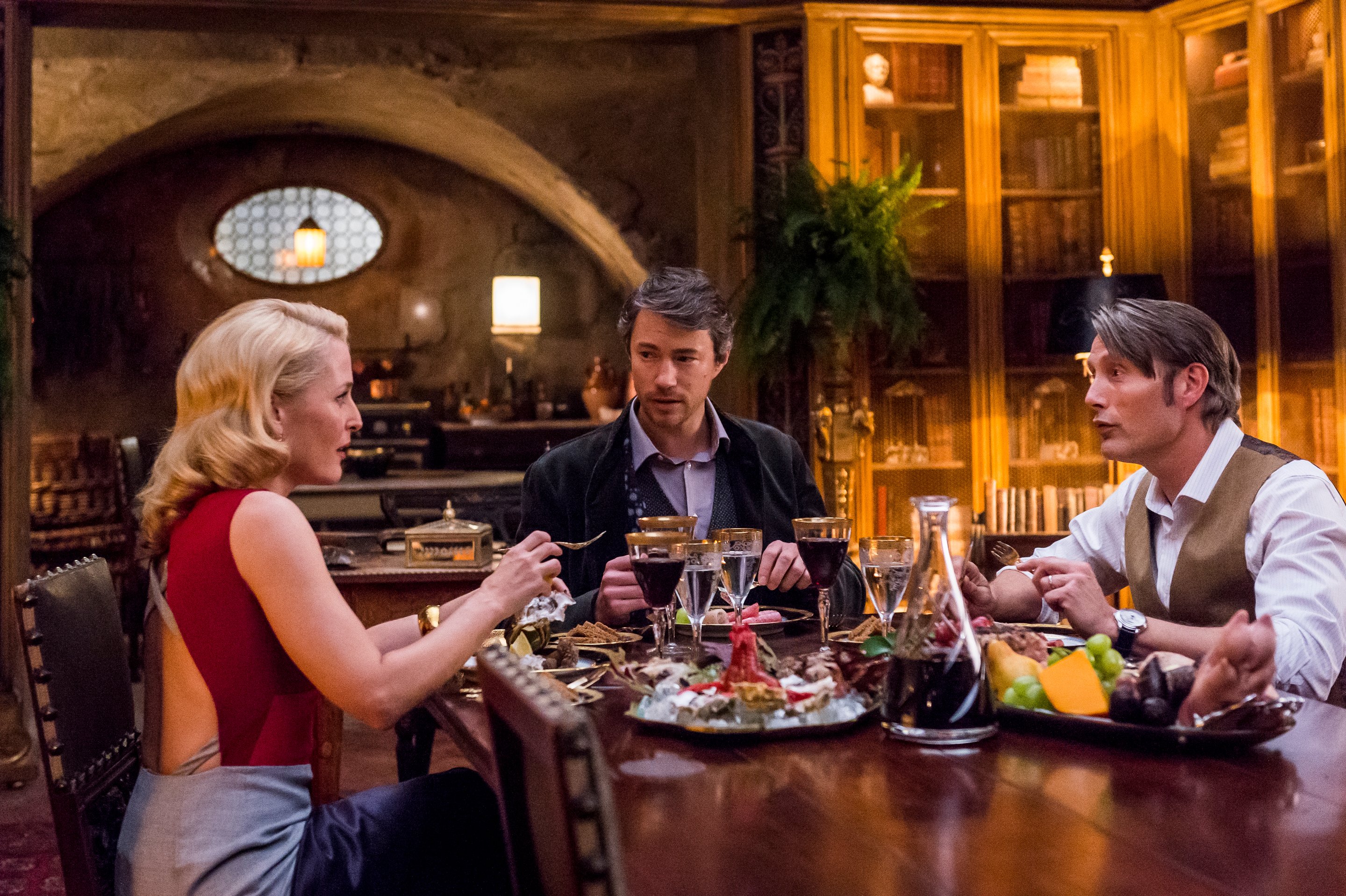If all your knowledge of television came from internet speculation and hype, Hannibal might seem like one of the most popular shows on TV. There are countless forums, reviews, and think-pieces revolving around the show, an unlikely brilliant re-imagining of a played out franchise (I wrote my piece during season one, which you can find here).
And yet, if you look at the Nielson ratings, Hannibal is one of the least-popular shows on network television. It has survived for three seasons almost entirely because it is a co-production with international production company Gaumont. However, this year, Hannibal slipped to a 0.4 rating and NBC finally cancelled the series. Shortly after, NBC added insult to injury and, apparently at the request of advertisers, moved the remaining episodes of the show to Saturday where it could do no harm.
And yet, despite ratings that would have been hysterically low ten years ago, Hannibal had roughly a 50% chance to get picked up elsewhere. Netflix was reportedly very interested, Amazon was in negotiations, and other platforms eager to make a name for themselves also coveted the show and its rabid fanbase. At this point Hannibal’s renewal looks unlikely, but it is because of contractual entanglements and busy schedules rather than the shockingly low number of people who report watching Hannibal in their Nielson journals. We’ve finally reached the point where the Nielson Ratings, recorded by a random sampling of Americans who must handwrite their TV watching habits into a notebook, are obsolete.
This is a wonderful thing for a number of reasons. For one, the Nielson system has been hilariously outdated in its methodology for a long time. In an age when we can electronically track any shows that any viewers watch through cable boxes with perfect accuracy, relying on users to do this themselves and not lie about shows they fear will reflect negatively on them is foolish. Also, because the Nielson system completely ignores online viewing and diminishes the importance of DVR playback, it only captures a very small subset of a program’s viewers. Many of the most passionate television fans aren’t actually watching shows on cable anymore.
Better, though, is the way that this reframes what makes for a “successful” show. Nielson was based entirely around the quantity of viewers a show could attain. This meant that creating something artistically specific and interesting was potentially harmful, because it might alienate part of its potential viewer-base. Instead, the goal was to create something simple and not particularly thought-provoking, where somebody could leave it on while making/eating dinner and jump in and out of the program without feeling like they missed anything significant. Comedies were all about short-lived set-ups and punchlines, and dramas followed recognizable formulas that wrapped up each week.
Now, though, shows are being greenlit with a secondary market in subscription streaming services and potential full-season purchases in mind. Since the Nielson ratings are a joke, a broad and uncaring audience is less valuable than a small but passionate one. The latter will follow a show wherever it goes and add value to whatever platform it exists on. This model incentivizes programming that is wholly unique, that captures a fanbase which may be underserved elsewhere.
It is also why I believe we are still in a “golden age” of television. There is a reason why shows like The Sopranos and The Wire ushered in our current era: they existed on HBO, a subscription-based service. They, too, benefited from a creative impetus based around small passionate audiences rather than large and uncaring ones. What we are seeing now is the power of the subscription model applied to ALL programming. It is why there is now arguably too much great television to keep up with. As far as problems go, that is one I am perfectly fine having.
